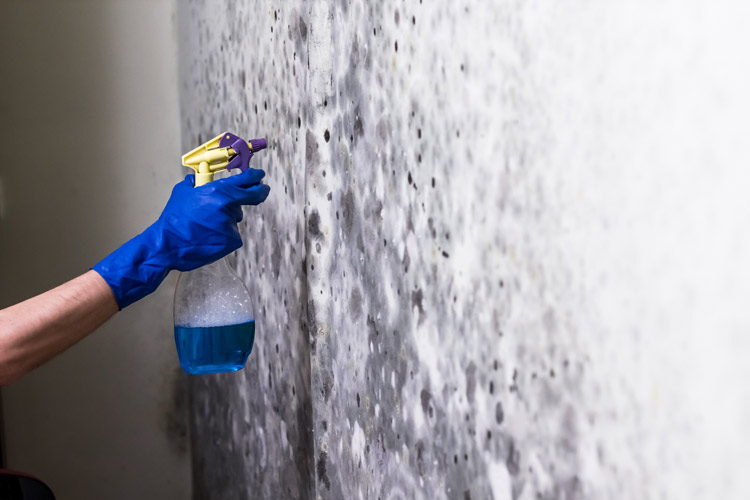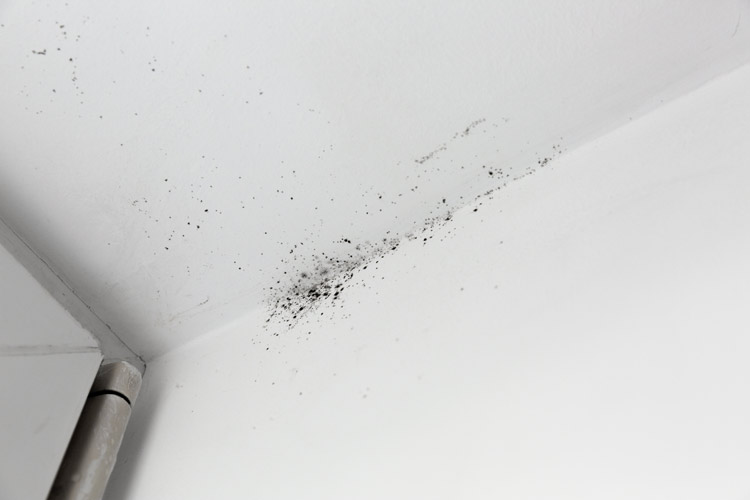Thursday Mar 7th, 2024
As springtime approaches, damp air, and heavy rains could potentially lead to harmful mold in your home. Because mold is a common allergen and irritant, many people are prone to physical symptoms of exposure, such as sneezing, running nose, red eyes, and skin rashes.
At Gem City Cleaning Solutions, we understand how important it is to keep you and your family healthy and safe. To help you combat the potentially harmful repercussions of mold exposure, we wrote this blog post to help you minimize instances of unsightly and sometimes harmful fungi within the home.
Molds and Mildews: Common Household Fungi
Molds and mildews are fungi that grow from tiny, durable spores in environments where both moisture and oxygen are present. Mildew is typically considered early stage mold—that is, mold that has not penetrated the surface on which it's growing. Both tend to favor growing on organic materials such as wood, food, and plants. However, they can also appear on tile, pipes, and carpet.
Because they grow so quickly, molds and mildews appear virtually everywhere. Keep in mind: molds themselves aren’t harmful. However, they produce chemical substances called mycotoxins, which, in large quantities, are harmful to people. To ensure mycotoxin levels stay low in your home, it’s crucial to remove molds on the spot before an infestation can cause structural damage to your home or physical harm to you and your loved ones. The six most common types of household molds you need to be aware of include:
1. Stachybotrys
Stachybotrys is commonly referred to as black mold. It is one of the most harmful toxic fungi found inside homes. If exposed to large amounts, the mycotoxins in black mold can cause the lungs to bleed. Stachybotrys is one of the hardest molds to detect because it favors dark places, including moist spots behind walls, under carpets, and in ceilings.
2. Chaetomium
Chaetomium is a toxic mold that often causes allergic reactions. It’s most commonly found behind drywall that has sustained water damage but may also appear behind wallpaper and baseboards. In some extreme cases, Chaetomium spores can cause autoimmune diseases and severe allergic reactions. It's often confused with black mold because of its black, fuzzy appearance.
3. Aspergillus
Aspergillus is a green, and grey flecked mold that usually appears on wooden surfaces or other organic material like produce, stored grains, or even spices. It tends to cause extreme allergic and asthmatic reactions, making it particularly dangerous for those prone to allergies or with a history of asthma. In some instances, Aspergillus has even caused hay fever and lung infections.
4. Penicillium
One of the most common molds, Penicillium, actually has a variety of uses, including the production of some cheeses and medicines. Like Aspergillus, Penicillium favors organic matter such as decaying vegetation, dried foods, and spices. It is also sometimes found on natural building materials like wood and cardboard. Penicillium is known to cause severe allergic reactions and is especially problematic for those with already weakened immune systems.
5. Fusarium
Fusarium typically presents as a pink, red, or white mold found on food products, compost, and any water-damaged area in the home. It can adapt to cold temperatures and is, therefore, one of the more durable molds. Even mild exposure to Fusarium can cause allergic reactions such as a sore throat, itchy eyes, or runny nose. Extensive exposure can lead to more damaging complications, including brain abscesses, bone infections, and internal bleeding.
6. Alternaria
Alternia is another highly common toxic mold and is usually found in rotten wood, plants, and bricks. It typically presents as a thick, moss-like fuzz and is normally black, green, or grey in color. When inhaled, Alternaria is a known cause of asthma and hay fever.
Tips for Reducing Mold Inside the Home
Mold is a common household problem, so don’t panic if you start noticing it around your home. To prevent extensive growth and resulting damages, there are a few steps you can take to reduce its presence and help keep you and your loved ones safe from its harmful effects.
Maintain Optimal Humidity Levels
Because mold grows in damp environments, it’s critical to keep your home’s humidity levels as low as you can. The Centers for Disease Control and Prevention (CDC) recommends not letting indoor humidity levels exceed 50 percent. Depending on the climate where you live, an air conditioner or dehumidifier can help maintain optimal humidity inside your home.
Allow Air to Flow Freely
If a year-round air conditioner isn’t an option, use exhaust fans or other air circulators to keep your home dry. Avoid leaving wet or damp items in areas where the air is stagnant, and always be sure your dryer is properly vented outside.
Fix Leaks
Mold grows where moisture is plentiful, so if you notice any leaks in pipes, roofs, or around windows, address them immediately.
Clean Up and Dry Out Quickly After Water Damage
If your home has sustained any water damage, your goal should be to eliminate all moisture within 48 hours. Pay special attention to rooms with carpets. After the water damage occurs, consider hiring a home inspector to check for harmful molds so they can be addressed before extensive health and structural problems have time to manifest.
Keep a Clean Bathroom
Molds love bathrooms. Leakages that occur around a warm shower are hotbeds for mold growth and should be cleaned regularly. Be mindful of tiles, space underneath sinks, and shower curtains. Additionally, turning on a fan during a bath or shower and leaving the door open after to improve airflow can help reduce the chances of bathroom mold growth.
Schedule a Thorough, Professional Clean
Keeping up with mold can be a lot to handle, and letting any amount go unchecked can cause serious damage. A regular, thorough clean from a professional service will ensure no area of your home is left unchecked. What’s more, a professional’s eye might just help alert you to potential problems and areas that may need more attention.
Hire a Helping Hand
It’s hard enough to clean the spaces we can see, let alone the ones we can’t. Unfortunately, those less-visible areas are where molds tend to flourish.
But with a bit of help from the right people, you and your family can sleep soundly, knowing that mold is not a problem in your home. A thorough cleaning from Gem City Cleaning Solutions can help ensure the problem areas aren’t problematic and that unseen dangers don’t make their way to your loved ones. Contact us today to schedule a full clean and tackle mold on the spot.
